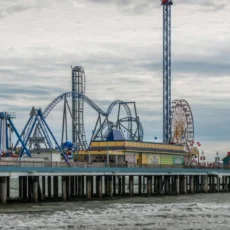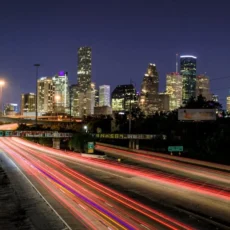
Austin, Texas—known for its quirky energy, booming tech scene, and a dash of Southern flair—holds a treasure trove of stories going beyond its music and food truck fame. Beneath its reputation as a progressive haven lies a deep-rooted history of LGBT activism, a journey paved with struggle, resilience, and transformative moments. Here, we’re peeling back the layers to reveal some lesser-known chapters of Austin’s LGBT story, from the early sparks of resistance to the milestones and heroes that shaped the community’s identity.
Early Beginnings: Setting the Stage
It was the 1960s and 1970s, a time when civil rights movements surged nationwide, yet in Austin, LGBT folks faced an especially uphill battle in a largely conservative Texas landscape. Surprisingly, the University of Texas at Austin would become a springboard for change. Fueled by a shifting counterculture and a student body eager to challenge the norms, UT began to incubate spaces where Austin’s LGBT people could find community—and strength in numbers. It was more than a student revolution; it was the start of something radical.
In 1970, the Gay Liberation Front (GLF) came onto the scene, its members inspired by the Stonewall Riots’ reverberations. The GLF chapter at UT Austin wasn’t just any student group; it was one of the first of its kind, in the South and soon became a nerve center for protests, dialogues, and a rare sense of belonging. People were defying isolation, showing up for each other—a quietly profound defiance against a society that often pushed them to the margins.
Breaking Ground: The Rise of Austin’s LGBT Advocacy Groups
As Austin’s LGBT population grew, so did their resolve to organize. By the late ’70s and early ’80s, a wave of local LGBT organizations took shape, each with its mission. The Austin Lesbian/Gay Political Caucus (ALGPC), launched in 1977, intended to amplify LGBT voices in the political sphere. They didn’t just stop at petitions or protests—they aimed to get LGBT-friendly candidates elected and to push for policies that protected against discrimination. Their efforts made waves, culminating in 1982 with the city’s landmark ordinance against employment and housing discrimination based on sexual orientation. This victory was unprecedented in Texas, a place not exactly known for progressive stances on LGBT rights.
Then came the Waterloo Counseling Center in 1983, another pivotal institution. Waterloo offered mental health services to Austin’s LGBT community, tackling subjects like coming out, facing societal backlash, and navigating the emerging AIDS crisis. In an era when healthcare often failed the LGBT population, Waterloo provided a refuge for those who had nowhere else to turn, a place that offered empathy and care without judgment.
The 1980s AIDS Crisis: Austin’s LGBT Defining Hour
Then, like a dark cloud that rolled in too quickly, the 1980s brought the AIDS crisis. Lives were stolen, fear filled the air, and for many in Austin’s LGBT community, it was a time of despair. Yet from this tragedy arose some of the community’s strongest networks. AIDS Services of Austin (ASA) was founded in 1987 to answer the epidemic’s harsh demands, providing testing, education, and essential support services. But ASA wasn’t just about treatment; they were warriors in a public battle, tackling rampant misinformation and demanding better healthcare resources. The crisis revealed a rare resilience—neighbors supporting neighbors, strangers transforming into lifelines amid unspeakable hardship.
Modern Activism: The Fight Evolves
Fast forward, and Austin’s LGBT movement stands on firmer ground, yet the fight remains relentless. Today, the landscape includes new hurdles: debates over bathroom bills, “religious freedom” laws, and the rights of transgender Texans. Equality Texas and the Transgender Education Network of Texas (TENT) now lead the charge, carrying the legacy of past struggles into present battles. Armed with decades of hard-won experience, these groups aim to protect and advance LGBT rights, demanding inclusive policies and fighting for equal access to healthcare and education.
Pride and Progress: A Celebration with a Purpose
Of course, no story about Austin’s LGBT community would be complete without mentioning Pride. Since its humble beginnings as a modest march in 1990, the Austin Pride Parade has blossomed into a vibrant spectacle that fills the city’s streets. It’s more than just a party; it’s a vivid tapestry of the wins, losses, and in-betweens that have shaped Austin’s LGBT community over the years. Pride represents joy and remembrance—a chance to honor the past and recharge for the remaining work.
The Legacy and the Road Ahead
Austin’s LGBT history is as complex as the city, marked by adversity, transformation, and defiance. From the early struggles at UT Austin to the ongoing fight for transgender rights, each story is a thread in the fabric of Austin’s identity. This history isn’t static; it grows and adapts with each new generation, constantly pushing the city toward greater inclusivity.
This article merely scratches the surface, but it’s a reminder of the power that comes from unity. It’s about the countless unsung heroes whose bravery brought change and whose legacy paved the way for tomorrow. Austin’s LGBT community doesn’t just survive—it thrives, holding onto a rich past while chasing a hopeful, more equal future.



























